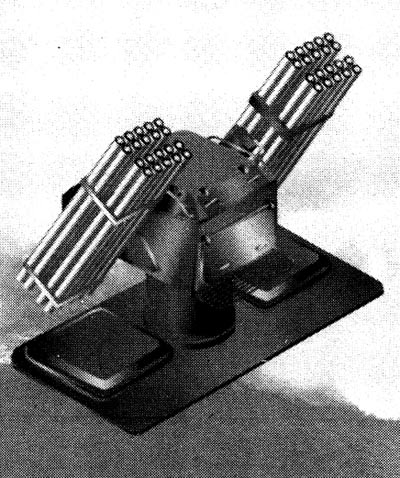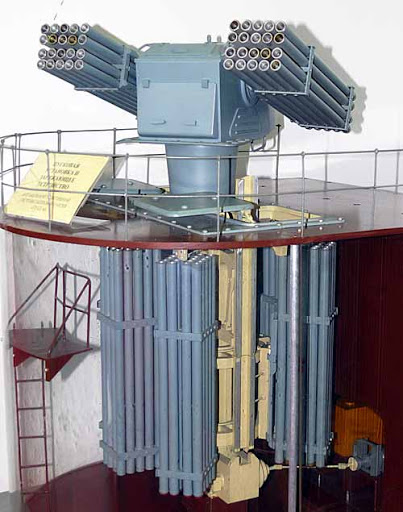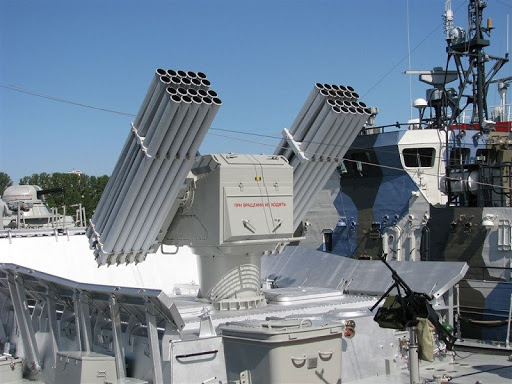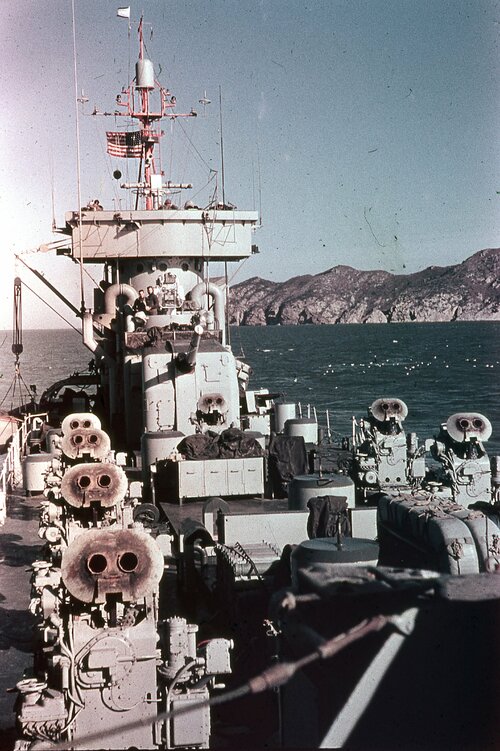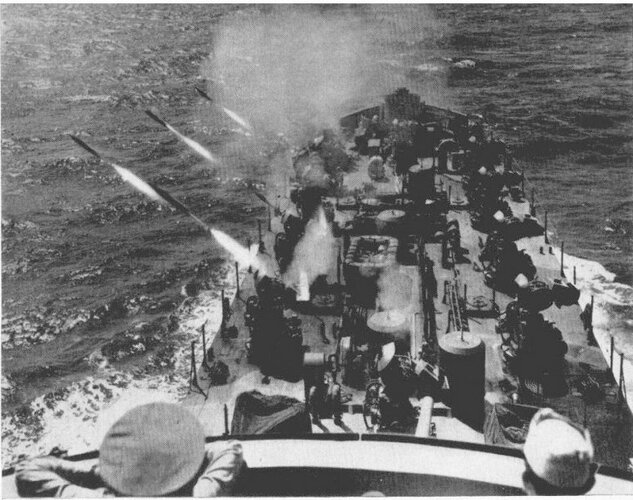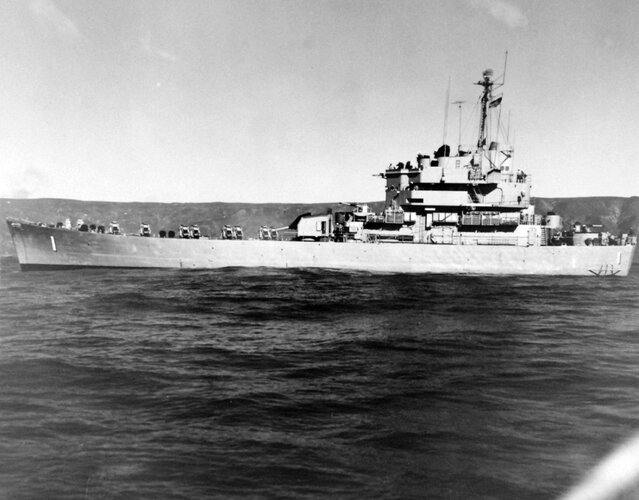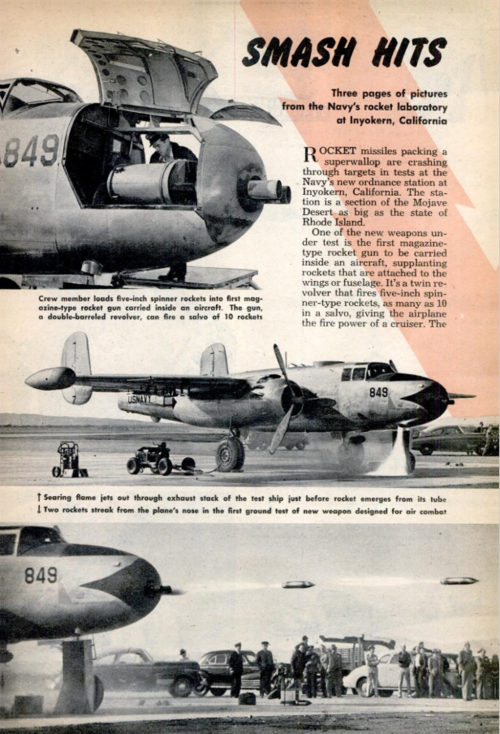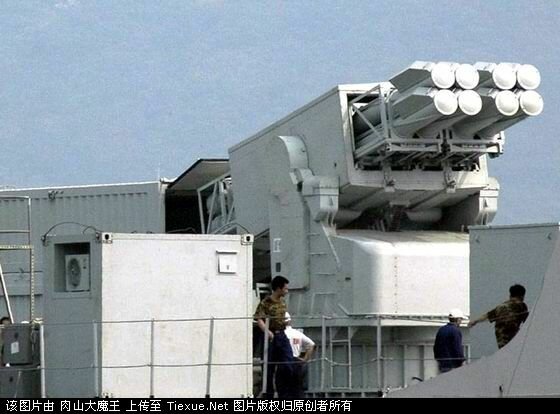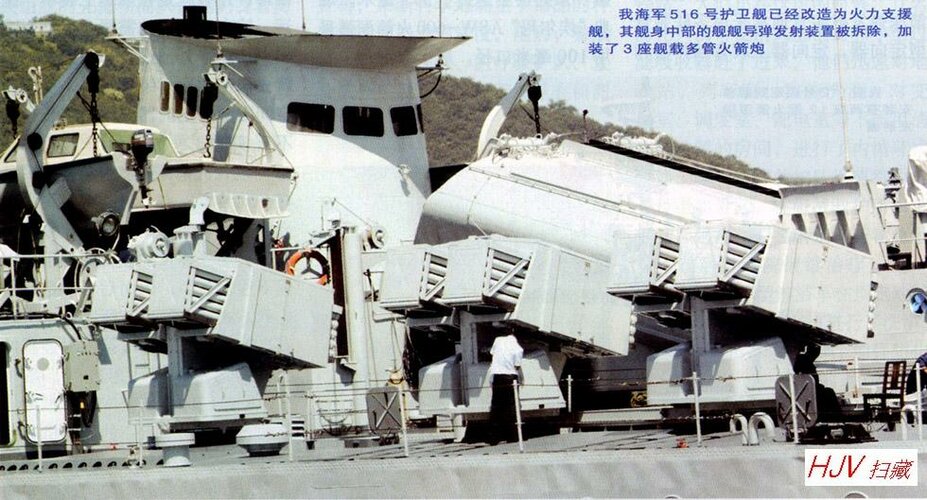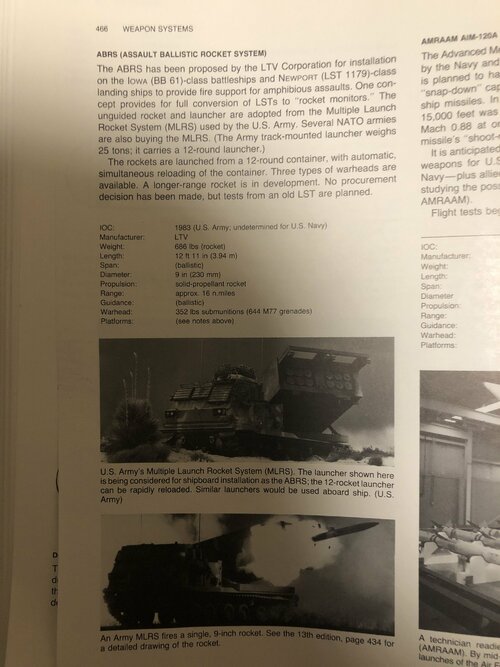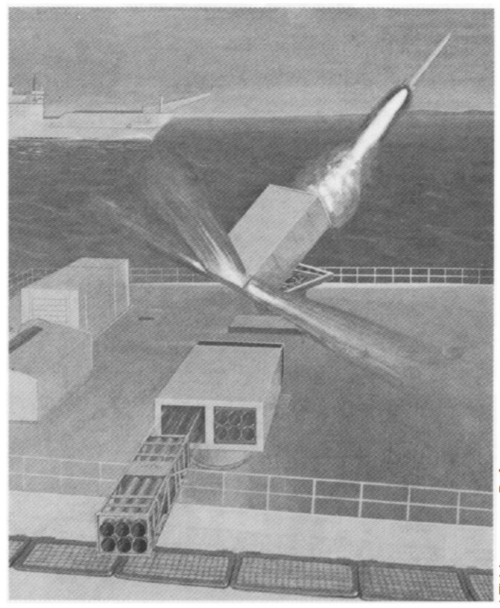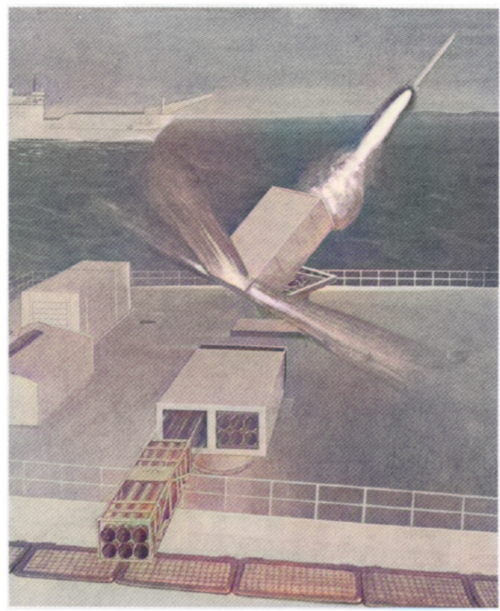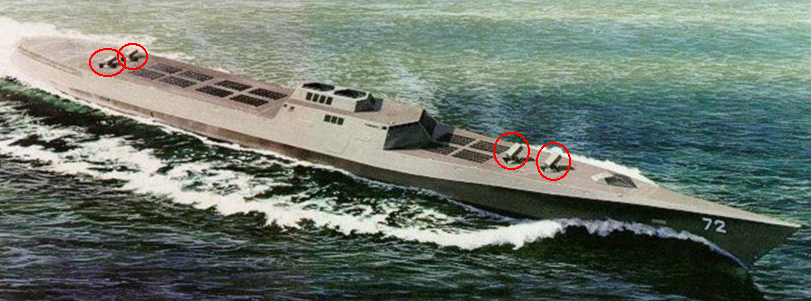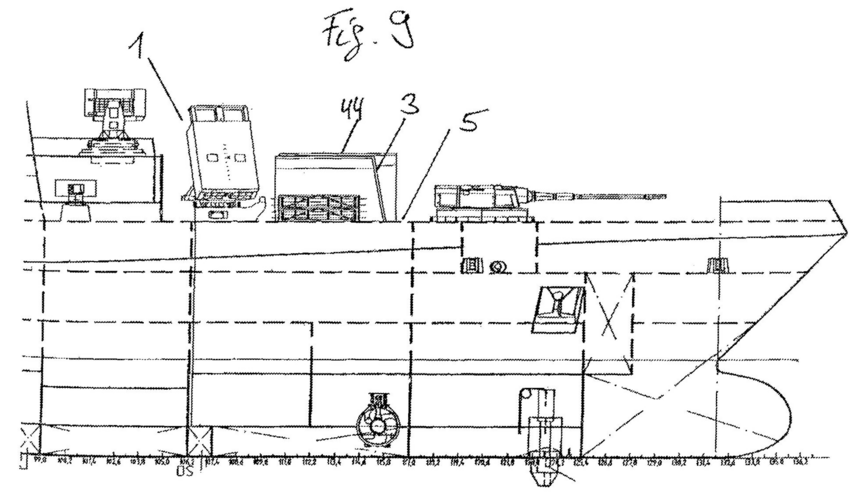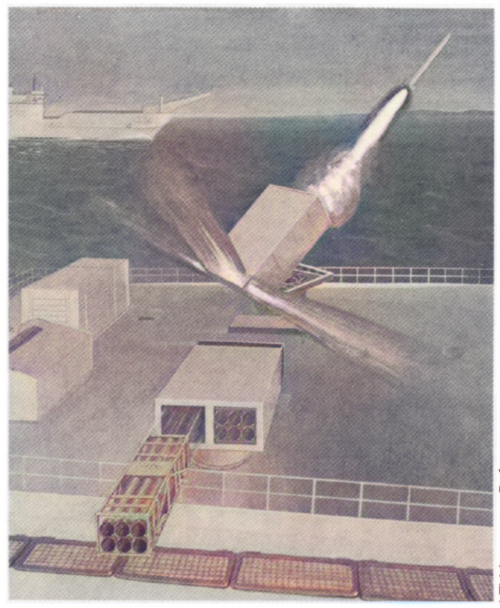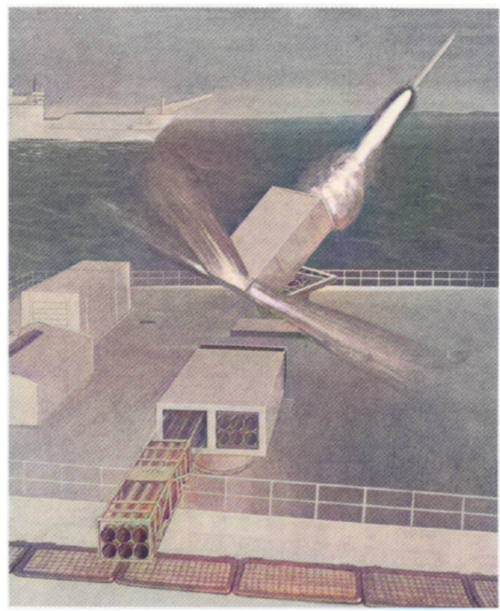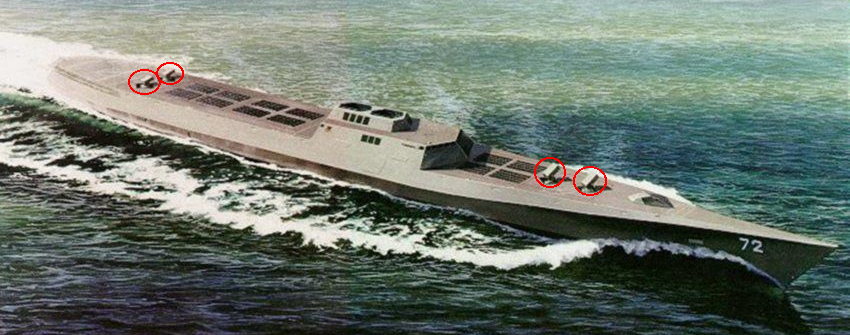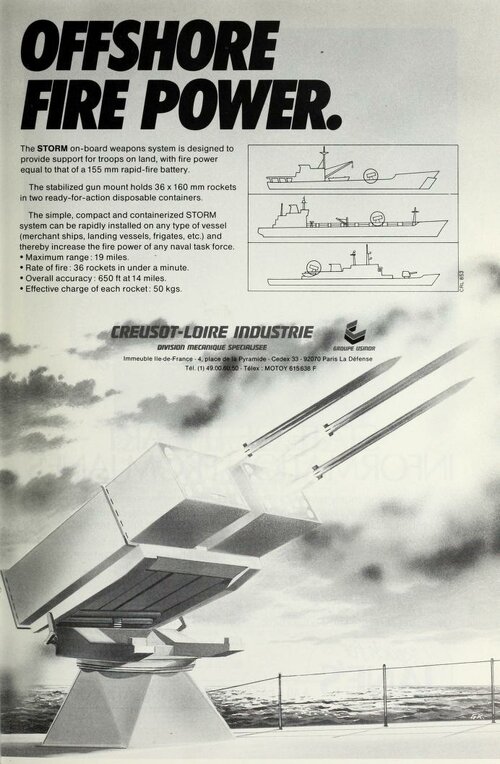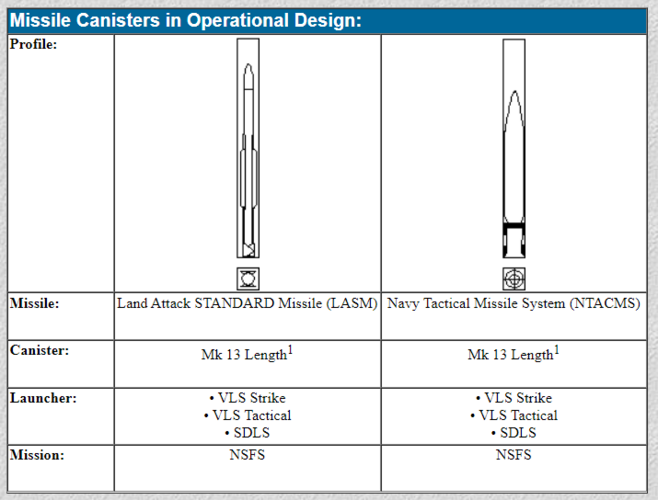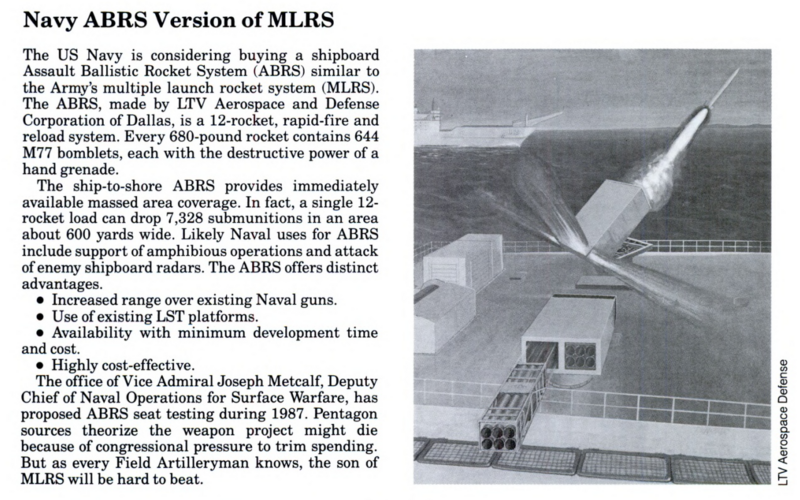A thread for naval bombardment rockets and their launchers.
First up, Creusot-Loire's "Storm".
Additional information from the 1984 French Naval Exhibition, when the system was being aimed at supporting amphibious landings:
Best available scan (1987 version):

First up, Creusot-Loire's "Storm".
- Rocket calibre 160mm.
- Displayed in model form at Bourget Naval 1984 and 1986 French Naval Exhibition.
- Structural trials were due in 1987 with first land firings in 1988.
- French Navy interest was for launching countermeasures and sonobuoys.
- Lacroix were said to be developing a cargo projectile with flashbang submunitions.
Additional information from the 1984 French Naval Exhibition, when the system was being aimed at supporting amphibious landings:
- Launcher 3.3t empty
- Each 18 round container 540kg empty and 2.5t loaded.
- Each rocket had 50kg HE warhead (36 rockets = 1.8t HE)
- Range 28km with 10.3mils dispersion
- RoF at least 36 rounds/minute
Best available scan (1987 version):
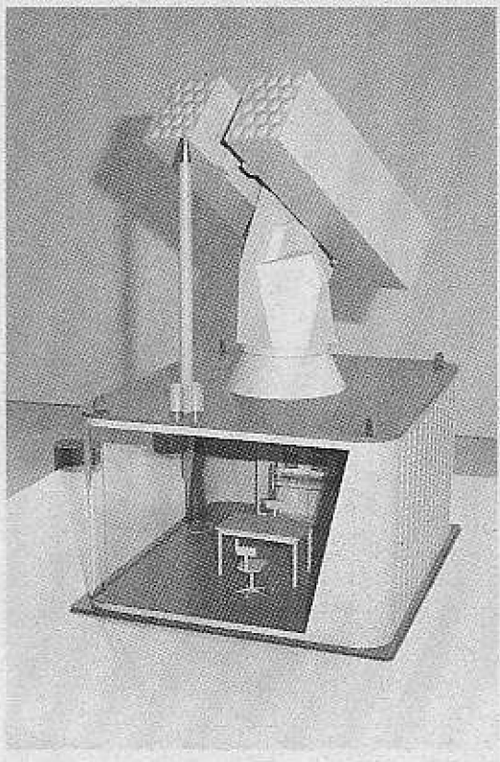
Last edited:

